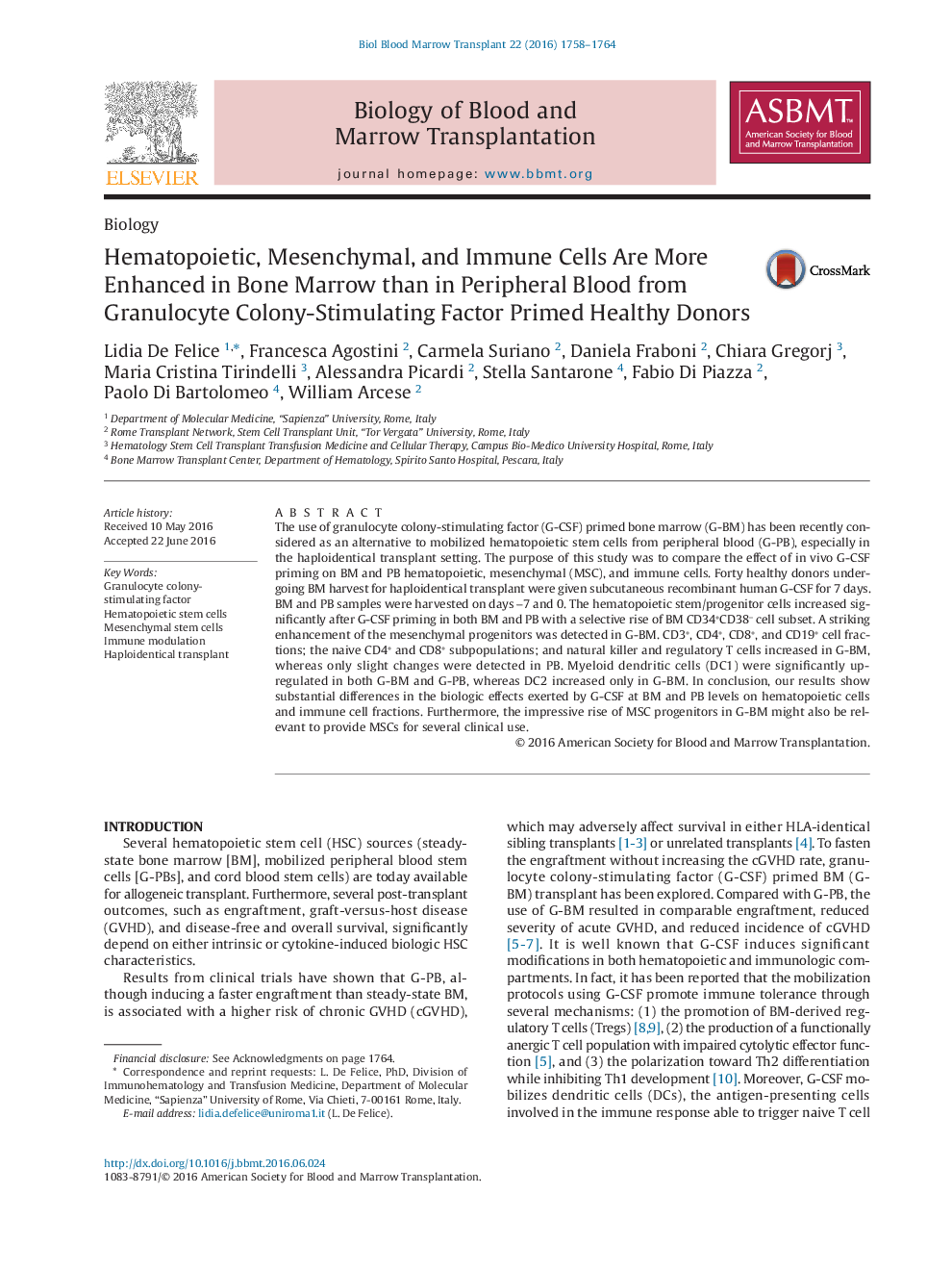| Article ID | Journal | Published Year | Pages | File Type |
|---|---|---|---|---|
| 5524545 | Biology of Blood and Marrow Transplantation | 2016 | 7 Pages |
â¢Early CD34+CD38â cell fraction is highly increased in G-BM.â¢A striking rise of the mesenchymal progenitors is detected in BM after in vivo G-CSF priming.â¢The effect of G-CSF priming on immune cells is more pronounced in BM than in PB.â¢Regulatory T cells increase only in G-BM.
The use of granulocyte colony-stimulating factor (G-CSF) primed bone marrow (G-BM) has been recently considered as an alternative to mobilized hematopoietic stem cells from peripheral blood (G-PB), especially in the haploidentical transplant setting. The purpose of this study was to compare the effect of in vivo G-CSF priming on BM and PB hematopoietic, mesenchymal (MSC), and immune cells. Forty healthy donors undergoing BM harvest for haploidentical transplant were given subcutaneous recombinant human G-CSF for 7 days. BM and PB samples were harvested on days â7 and 0. The hematopoietic stem/progenitor cells increased significantly after G-CSF priming in both BM and PB with a selective rise of BM CD34+CD38â cell subset. A striking enhancement of the mesenchymal progenitors was detected in G-BM. CD3+, CD4+, CD8+, and CD19+ cell fractions; the naive CD4+ and CD8+ subpopulations; and natural killer and regulatory T cells increased in G-BM, whereas only slight changes were detected in PB. Myeloid dendritic cells (DC1) were significantly up-regulated in both G-BM and G-PB, whereas DC2 increased only in G-BM. In conclusion, our results show substantial differences in the biologic effects exerted by G-CSF at BM and PB levels on hematopoietic cells and immune cell fractions. Furthermore, the impressive rise of MSC progenitors in G-BM might also be relevant to provide MSCs for several clinical use.
